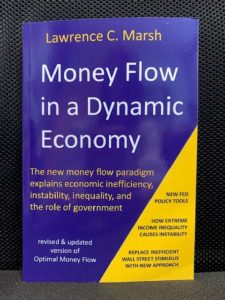Money Flow in a Dynamic Economy: by Lawrence C. Marsh
The new money flow paradigm explains economic inefficiency, instability, and the role of government.
Summary:
“An abundance of stimulating, original ideas await the readers who appreciate books at the intersection of politics and economics. One of many such new ideas in Lawrence Marsh’s important book, Money Flow in a Dynamic Economy, is creating Federal Reserve Bank accounts, called FedAccounts, for everyone with a Social Security number. In times of recession the Fed could inject money into these FedAccounts directly instead of pouring money into the New York financial markets. By reissuing the Postal Savings Act of 1910, Congress could provide the Federal Reserve with a new return-on-savings tool to encourage savings and suppress demand when too much money is chasing too few goods causing excessive inflation. For over 50 years from 1911 to 1966 Americans could go to any post office to cash a check or set up a savings account. A sign at every post office offering 10 percent interest on savings for amounts up to $10,000 could quickly reduce excessive demand as people saved more and spent less which would reduce excessive inflation without sending our economy into an unnecessary recession.”

Order
Purchase your copy of Money Flow in a Dynamic Economy today and receive priority shipping directly from the publisher. 100% of the purchase price will support Avila student scholarships.